
Garage Door Troubleshooting Guide [With Flowchart]
If your garage door stops working properly, that’s kind of a big deal. Not just on the safety front—they’re heavy and can cause a lot of damage if something goes wrong—but it’s also just plain inconvenient.
Fortunately, we’ve put together this guide (plus a flowchart) covering a range of issues and possible solutions to help you figure out the problems with your door. With some detective work, you should be able to figure out why your garage door isn’t working and get it fixed, whether that’s by you or by a professional.
This guide should help you to answer questions like the following:
- Why won’t my garage door open/close?
- Why won’t my garage door open/close all the way?
- Why does my garage door keep getting stuck?
- Why does my garage door keep going back up?
Before you start, take some time to review this garage door parts diagram to help give yourself the proper context for understanding issues and repairs.
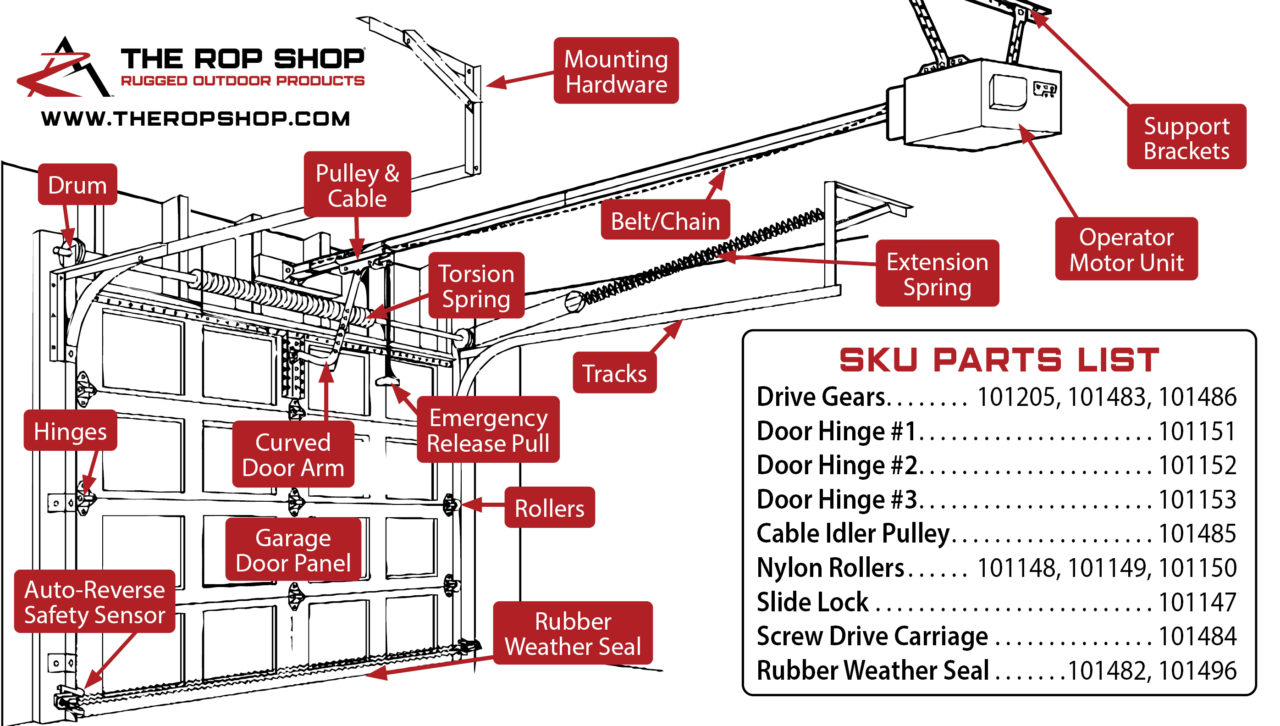
How to manually open your garage door
First things first: if your garage door refuses to open and you need a quick fix because you’re in a hurry to hop in your car and go somewhere, try using the manual opener.
This should only be done when the door is fully closed.
Look for a red cord hanging from the door’s trolley and pull it. This will allow you to open the garage door by hand.
The door’s weight should be manageable thanks to the torsion spring at work. However, if you find this is not the case, then something could be seriously wrong with your door, and you may be better off not attempting to open it.
If all is well, then once your door is safely closed again, you can re-engage the automatic opener by pulling on the string until you hear the mechanism click back into place.
With that covered, let’s move on to some ways to solve your garage door woes.
Garage door troubleshooting flowchart
To help you get into the problem-solving mindset and hopefully get your garage door working again quickly, we’ve made this flowchart that you can work through. As you narrow down the options for what the issue is, you can consult the relevant sections of this blog for additional context.
This flowchart is just meant as a general guide to help you identify some of the most logical solutions for your garage door problems. It doesn’t mean your case is hopeless if the first recommended solution isn’t effective. Try using some of the other solutions found in the chart.
If the chart isn't displaying below for you, you can find it here: garage door troubleshooting chart.
The quick cases
It’s possible that your garage door isn’t working due to some small problems with simple solutions. So before you begin panicking or spending all day looking for issues to repair, try these fixes:
- Replace the batteries in your garage door’s remote. They typically need to be replaced about every two years.1
- If you recently experienced a power outage, it could be that your remote has to be reprogrammed.1 Even if you haven’t had a power outage, it’s worth a shot.
- Ensure that there’s power going to your garage door opener.
- Make sure there isn’t a manual or an automatic lock on your garage door preventing it from operating.2
- Ensure your disconnect switch (the red string hanging down from the trolley) wasn’t pulled by accident.
If you’ve tried these but with no results, it’s time to move on to some slightly more complicated solutions.
Tracks and rollers
It could be that there’s something wrong with your garage door’s tracks or rollers that makes it difficult to open or close the door.
Perhaps the tracks became bent, which means the rollers may not have the space they need to continue moving along smoothly. It’s also possible that something like dirt or debris is blocking the tracks or that the rollers need some lubrication to work correctly.
A more precarious situation is if a roller has jumped the track altogether. In this case, you may be able to get it back into place yourself (with an abundance of caution).
However, when in doubt, get in touch with a professional, especially if the escaped roller is one of the bottom ones. The lower brackets holding those rollers are under a lot more stress.3
In short, take stock of the track system and try to identify anything that seems obviously broken or out of place. Clean and lubricate components as necessary, and if there’s anything wrong that you feel is out of your ability to fix, go ahead and call a professional.
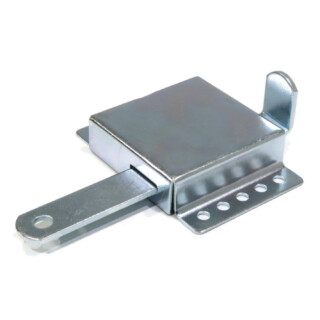

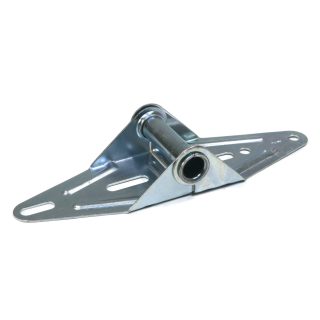
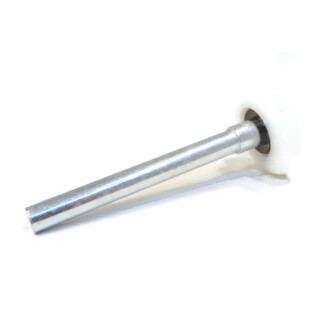
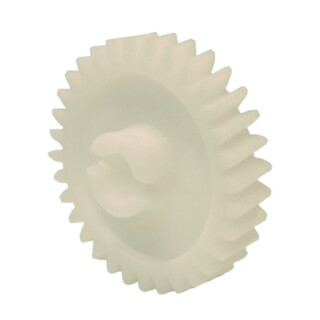
Torsion spring
Your garage door’s up-and-down motion is powered largely by the winding and unwinding of one or more torsion springs. And sometimes a spring can break, inhibiting the motion of your garage door.
If this is the case, you’ll probably want to call a professional to fix it. These springs store huge amounts of potential energy to move your door up and down, so they’re nothing to mess around with.
It should be fairly obvious if the spring is the issue. Look for—you guessed it—a broken spring on the rod above your garage door.
You can expect your garage door’s torsion spring to last about 8-15 years.4 If you’re getting close to that limit, you should start looking at getting it replaced even if it turns out not to be the problem at the moment.
Cables
If your garage door has a hard time opening and closing, regardless of whether you’re doing it manually or using the opener, it could be an issue with the cables.
Take some time to examine them. Perhaps they’ve become frayed or loose, or maybe they've even snapped. An expert should be called in if you determine that the cables are indeed the issue.
Photo sensors
Your garage door’s photo sensors are handy when, unbeknownst to you, there’s an obstacle in the path of the door that you’d prefer doesn’t get crushed.
But sometimes they can be a bit…overdramatic, stopping your garage door from closing for seemingly no reason at all.
These sensors work by sending a beam of light from one end of your door to the other. When that beam is interrupted, your door goes back up to prevent injuries or damage.
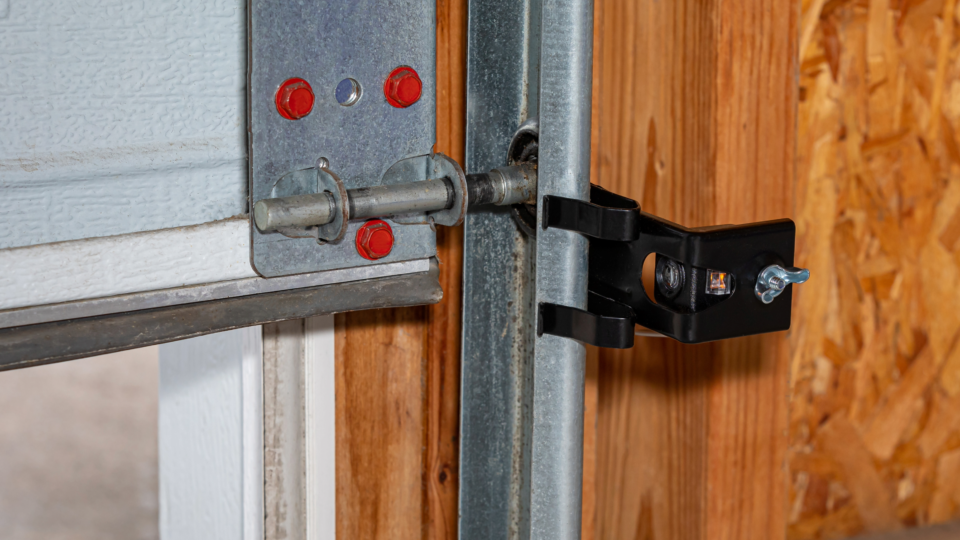
This means that if your garage door starts to close only to reverse course and move back up, you should check near the bottom of your door (where the sensors are located) to see if there’s any obstruction causing your sensors to think that there’s something wrong.
You can also clean the sensor’s lenses to see if that corrects the issue.
No dice? Ensure that the lenses are properly aligned with each other. They can become knocked out of place over time, but you can adjust their positioning to remedy this.
Finally, if you notice that your garage door has trouble closing only at specific times of day and weather conditions, it could be that sunlight is interfering with your sensors. In the event that this is a persistent and frustrating issue, you can create your own small sunshades for the photo sensors to help avoid this.5
Limit switches
Your garage door opener has limit settings that essentially specify to the door the distance it should travel up or down.
If they are set incorrectly or simply need to be adjusted due to changes over time, your door may stop in the middle of opening or closing, thinking it’s traveled the necessary distance when it really hasn’t.
The limit switch might also be the culprit if you notice that your garage door will not stay closed. If your door thinks the ground is farther away than it really is, then whenever it hits the ground, it will assume that it hit an obstacle. This will cause it to start going back up as part of its safety features.6
Your owner’s manual should have instructions for how to adjust the limit switches on your door. Be sure to test your door thoroughly afterward to ensure that your door starts and stops at the proper points, including when obstacles are present.
Force settings
Similar to your garage door’s limit switches, these settings may be at fault if your garage door will not fully open or close.
Your garage door will have an open force setting and a close force setting. Both can be adjusted if you notice your door is having problems opening or closing automatically and no other solutions have been effective.
If the issue is that your door will not fully close, then you will need to increase the close force setting. On the other hand, if you notice it is slamming, then you should decrease it.
Does your door have trouble opening all of the way? It may not have the necessary force to open completely. In this case, you’d want to increase the open force setting.
When adjusting any of these settings, it’s important to do so in tiny increments so that you don’t go overboard and harm your door, and you should test your door thoroughly afterward to make sure that none of the safety settings have been jeopardized.
Conclusion
Having a broken garage door is a frustrating inconvenience at best, but with some time and attention, you may discover that you can fix it yourself.
Need some supplies to get the job done? Check out our selection of garage door parts. We provide a one-year warranty on all of our parts and offer free shipping to the Lower 48 States.
Finally, once your garage door is fixed, wouldn’t it be nice to have some guidance on how to maintain it? We’ve got your back with this blog on garage door maintenance.
Good luck with your garage door repair!
- https://www.rcs-carolinas.com/blog/garage-door-wont-close/
- https://www.creativedoor.com/blog/help-my-garage-door-is-stuck-a-troubleshooting-guide
- https://www.youtube.com/watch?v=mpj_4xnLW84&ab_channel=GarageDoorGuidance
- https://www.thisoldhouse.com/garages/reviews/garage-door-spring-cost
- https://www.garagedoordoctorllc.com/garage-door-services-indianapolis/can-sunlight-exposure-affect-garage-door-sensors
- https://advanced-door.com/garage-door-closes-and-then-reopens/

Having trouble using your ROP Shop pressure washer surface cleaner? These tips can help you out.

Thinking about getting a pressure washer? Here are eight advantages to owning a pressure washer to help convince you.

Installing a new pressure washer pump doesn’t have to be a hassle. Let The ROP Shop walk you through it.

Ready to learn how to pressure wash quickly, effectively, and safely? Check out these eleven tips.